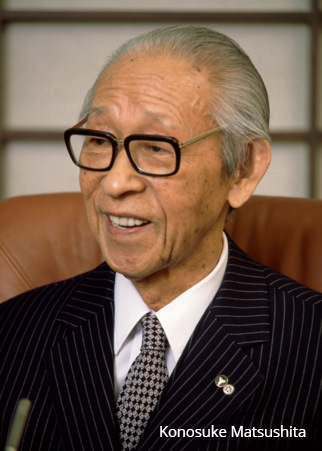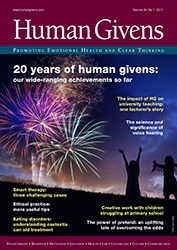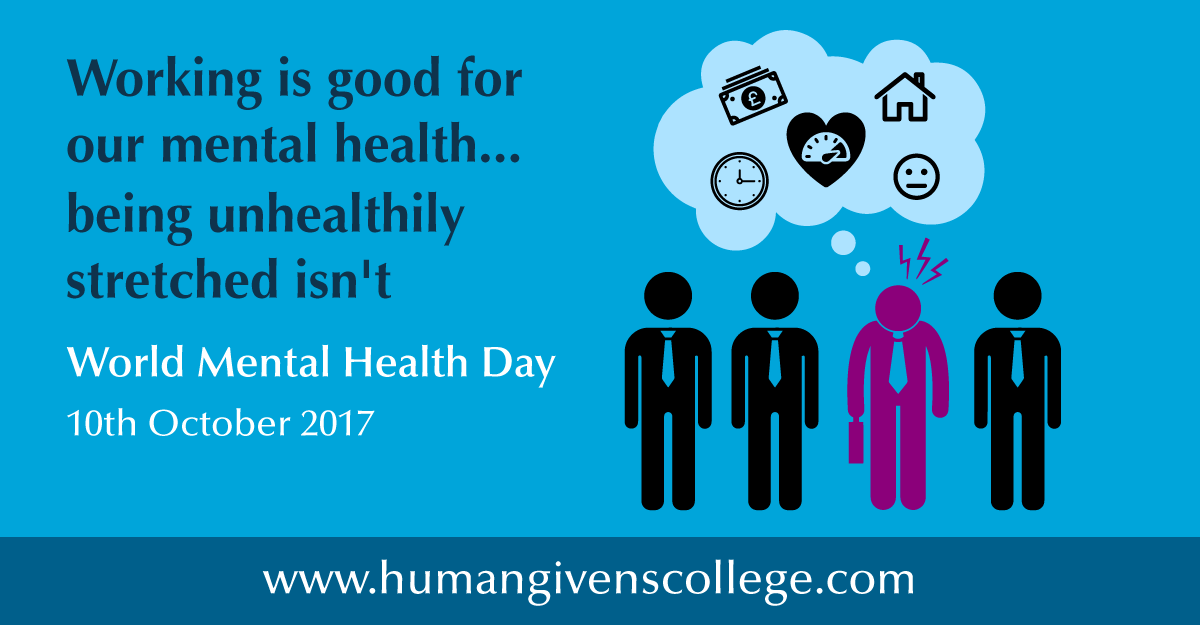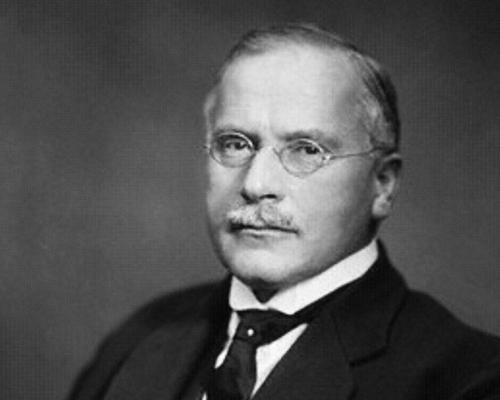How to get apples, not cactuses: an organisation fit for purpose
Cherry Dale explains how Birmingham South Central’s clinical commissioning group meets wellbeing needs of both staff and community by working on human givens lines.
An anxious mother called her local health visitor department with concerns about the wellbeing of her two children, saying they were withdrawn and isolated. After visiting, the health visitor could see no problem – the family wasn’t previously ‘known’ to them; the children were clean, well fed, well dressed, seemed happy and were attending school. Yet the mother kept on calling, and also visited her GP, expressing the same worries.
The health visitor, deeming her an over-anxious mother, finally told her to stop calling or they would refer her to social services – a threat her husband often made; the GP, however, after some highly pertinent training, asked a very important question. Instead of listening, perplexed, yet again to her seemingly groundless concerns about her children, he asked what was going on in her own life. She was taken aback by the question and it took a while for her to open up because, it turned out, she was so frightened. Then it emerged that she had been, and was still being, domestically abused, that it had been going on for years and not a single other person aside from the abuser knew. She had kept it secret because she had hoped to protect her children but finally she was reaching breaking point and fearing what her partner might do next. The abuse was getting more violent and coercive and she was increasingly concerned for her children’s welfare.
This was one of many cases of domestic abuse in our patch of Birmingham that might well have been missed (until perhaps a tragedy happened) but for the successful implementation of a project called IRIS (Identification and Referral to Improve Safety). IRIS trains GPs and other primary care staff proactively to identify patients suffering domestic violence from a partner or family member, and direct them to effective, specialised support. It is a marvellous project, originally trialled, and then adopted, in Bristol and Hackney.
But equally inspiring to us is how IRIS came to be adopted in the GP practices that form the Birmingham South Central (BSC) Clinical Commissioning Group, which buys in health care, including community health services, for around 302,000 people. Contrary to the popular image of lumbering, bureaucracy-bound, decision-making bodies within the NHS and local government, where any ideas for doing things differently may fall foul of red tape and almost never make it onto the radar of lofty decision makers, the potential of IRIS was identified and developed by one of our ‘clinical leads’ – a nurse specialist in domestic violence, who is employed as part of our safeguarding team. She was aware of the project, was impressed, researched it, wrote a paper about it, put it before our governing body, found additional funding sources, put a business case together, made a bid to run the project, won the bid and now, after its marked success, is extending the project even further. As a nurse, she had had few of the business skills to do any of this before she started, but was able to access support from the wider BSC team to help her achieve this.
This is the way we work in our clinical commissioning group, and IRIS is just one of many innovative projects (for instance, a nationally recognised diabetes prevention scheme, a latent tuberculosis infection project and a Mental Capacity Act project) that can be identified, investigated and brought quickly to fruition, to benefit our patient population.
Our story
A wonderful opportunity presented itself to us in 2012, with the Government decision to replace primary care trusts (PCTs) with clinical commissioning groups. I had been involved in commissioning and in primary care work for the PCT and was privileged that GP Andrew Coward, now chair of our group but who then had just started to emerge as a clinical leader, asked me if I would join with him in setting up the clinical commissioning group for Birmingham South Central. Both of us had a dream of a very different sort of service that would truly meet people’s needs. Knowing that performance and wellbeing are inextricably linked, Andrew wanted the new organisation to prioritise mental wellbeing and have a family feel.
I, having taken the Human Givens Diploma 10 years previously and having worked with the ideas ever since, was keen for needs and resources – of staff as well as those of the people we served – to be at the heart of the way we worked. Together, we had a vision of a model of commissioning in which decision making could be within the remit of all operational staff, so that everyone would feel empowered to explore and lead on good ideas for meeting the health and social care needs of our local population, without suffocating layers of bureaucracy getting in the way. Fortunately, Dr Diane Reeves, soon to be appointed our accountable officer (the chief executive role) felt the same way.

We also drew inspiration from the concept of ‘sunao mind’, to which Konosuke Matsushita, founder of Panasonic and one of the most renowned business leaders of the last century, attributed the success of his management style.
Sunao mind has no direct translation. However, as his close associate Toru Yamaguchi put it, “The sunao mind, or the untrapped mind, is calm and highly adaptable. It enables its owner to free himself of preconceived notions so that he can see things as they are. Managers who don’t have the sunao mind are often swayed by their own interests in decision making, inevitably leading to corporate failure. Since managers, just like everyone else, are creatures of habit and prejudice, they have to cultivate the sunao mind to judge the situation accurately and lead the way to corporate success.1 Konosuke himself said, “No matter how many years I collect, I continue to be challenged by each new development we face. It seems to me that the search for the ideal human society and the best in human potential is an unending and eternally fascinating journey.”2
No dark corners
Following these sorts of ideas seemed a powerful way of getting rid of the blame culture that has so stultified many large public sector organisations, better enabling us to seek out the questions to ask that would lead us to meaningful
solutions. From the start, therefore, we decided that there would be no dark corners in our commissioning group. When knowledge is not widely shared, those at the top of hierarchical organisations become overly powerful. So, right from the start, we instituted a Stand-Up meeting, as we called it, and a monthly team brief, which all our staff and clinical leads would attend first thing on Monday mornings. Initially, there were only eight of us but now there are up to 70 staff, covering areas such as governance, commissioning, business planning, health and safety, organisational development, safeguarding, finance, human resources, and more. We keep the meeting to half an hour (thus the stand-up part, literally to keep us on our toes) and in that time share information such as what went well the previous week, big or small (people shout out “I made contact with a new partner”; “we put in a massive bid”; “I had a highly instructive meeting with a patient”, etc) and what could have been better. As the leader of these meetings, I try to make them enjoyable and down to earth, sometimes mentioning something relevant from my own family life or the news. In the early days I would spend 10 minutes explaining human givens concepts, such as the importance of control, security and meaning, or solution focused working, as these were originally new ideas to many people. Nowadays, I talk about our organisation as a jigsaw, with each one of us holding an essential piece, and I like to end with a pertinent proverb or words of wisdom – cheerfully dubbed ‘Cherryisms’ by staff. One that I have shared that I find highly inspirational is “Don’t expect apples when you have sown the seeds of a cactus”.
Who needs help?
One important feature of the meeting is the sharing of priorities for different groups of staff (we don’t call them departments, as that implies rigid boundaries; we call them ‘natural working areas’, or functions, for want of a better name, because it is more fluid); I ask who needs help meeting deadlines and who has the capacity to give it. In the beginning, people were reluctant to say that they were struggling to complete a demanding task, and were equally reluctant to admit if they weren’t fully stretched – in more conventional organisations, both scenarios would be frowned on. However, we quickly made it clear that we wanted people to say if they were under too much pressure and, equally, that we expected workloads to wax and wane and thus wanted people to take responsibility for offering their time to help others if they weren’t under pressure themselves. For instance, people working in finance have gruelling workloads at the end of each month, so we make sure they get a plentiful supply of tea and biscuits and that anyone with spare capacity will join them to help in any way required. This is where our ‘natural working areas’ terminology becomes meaningful. People can join a particular area for a particular project or a particular day, according to need and availability.
Working in this way is possible because we have removed the traditional emphasis on ‘grades’. We never say that a person can’t do something because they aren’t at a high enough level. We have proved that if you have the skills, the talent, or the motivation to learn, you can do it. Recently, we were asking at the Stand-Up if anyone had spare capacity to help with facilitating at a major forthcoming consultation with patients, carers and other interested individuals about views on end-of-life care. We weren’t restricting this to people with clinical or management experience. Someone normally involved in administration or finance might be equally effective at facilitating conversations among people at tables or in one-to-one discussions. This is because we encourage and build the communication skills of all our staff. We see leaders as coaches, thus invest a lot in training people to communicate effectively and ask coaching questions, which means asking and eliciting, instead of directing. So, if someone is stuck, they will be asked, “What have you tried already? What could you learn from that?” until a novel or workable solution is reached. For us, everyone is a leader and those that go on external leadership coaching events bring back their learning to teach to the rest of us. This is our return on investment in leadership at all levels; the organisation continuously learns and develops alongside each individual learning activity. We also track all our leaders to assess the impact they have internally and externally when they move on in their careers.
Connecting up in the workplace
In the interests of helping meet our needs for connection, another organisational decision we made at the start was to ban internal email. For some this was quite scary to begin with, but we made it lighthearted, pretend-threatening that, if anyone sent one, we’d stick a big blow-up picture of them on the wall. Now no one would think of sending an unnecessary internal email and everyone appreciates the opportunity for one-on-one conversation – and the exercise they get walking to and fro. For something like this to work, communication has to be made easy, so, as part of our ‘no dark corners’ policy, our offices are open plan, with senior people sitting out in the middle, where anyone can approach them.

It isn’t perfect – noise can be a problem and we try to remain conscious of our need to respect each other’s space, with constant reminders given in the Stand-Up. Also, as inevitably sometimes there will be a need for more privacy, we have in place some ‘do not disturb’ desks, which people can use if they really need to get their heads down on some pressing project. There are also open spaces where people can have one to ones over coffee. Overall, it works well. People are constantly coming to my desk, and that of other senior staff, including our chief accountable officer, feeling free to say such things as, “I don’t think this works as well as it should – could we try such and such?” It would have been unheard of for a staff member to go and say that to a chief executive of old – if they could even get near him or her in the first place. We, however, make a point of listening with interest. As mentioned, some of our best innovations have been initiated by relatively junior staff.
So that everyone feels ownership for how our organisation works, we have a human resources (HR) working group, made up of a representative from each of our natural working areas, that develops our policies and strategies, which are then written into management guides. In the beginning, we met fortnightly but now it is every four to six weeks, depending on our action plans. Often what the group comes up with (for instance, guidelines for handling bullying) is quite a lot firmer than I would have dared to be! This group has created our induction packs, value-based individual development reviews, talent management strategy and wellbeing strategy, and wrote the questions for the six-monthly wellbeing review that we hold. This is not a vanilla exercise, full of management-speak and tick boxes. It asks down-to-earth questions designed to find out how involved staff feel in what is going on and whether they feel sufficiently content and cared about. For instance, have they laughed that day? Has anyone asked how they feel that day? Do they have someone at work that they can confide in, if necessary? Do they feel they have the opportunity to contribute to decision making? Do they feel they know what is happening within the clinical commissioning group and can influence our direction of travel? The findings are discussed; an action plan is agreed at the HR working group and shared; and then progress is monitored at the Stand-Up.
As per statutory requirement, we recognise unions and have union representatives. However, it says quite a lot that staff have elected not to bother with the regular meetings between management and union representatives that are conventional in most large organisations. I ask every year whether such meetings should be instituted and I am routinely told no. Because of the HR working group, the Stand-Up and the team briefing, people tell me, they already know everything that they need to know.
Leading with compassion
Very early on, we all recognised that, if we really wanted a family feel to our organisation, it had to be a happy place to work. Research into positive psychology has shown that ‘happiness’ has three aspects: positive emotion, engagement, and meaning, each of which feeds into life satisfaction.3 The concept of happiness is often viewed as irrelevant to work. However, many organisations have taken the research findings on board now and realise that happiness plays an enormous role in successful, innovative and high-performing companies across the world. The better the workplace is led and managed, the greater the wellbeing and performance will be. Equally, wellbeing cannot exist in our own heads alone but comes from a combination of a sense of autonomy, meaning, good relationships, and accomplishment in our lives. For us, leading with compassion means creating the positive emotions that lead to better performance, and we see it as our responsibility to do that, in a variety of ways. Fortunately, guidance from the National Institute for Health and Care Excellence (NICE) now supports our ambitions and recommends it to all workplaces.

For instance, we have a culture of recognition of achievements and congratulating people on them, remarking on interesting ideas, work completed well, helpful acts, etc. We have also made sure, through training, that our staff can recognise the signs that certain colleagues are not feeling quite themselves – perhaps being off hand or snappy or withdrawn or slightly tearful – and they are encouraged to check that out. “Is there anything on your mind that you’d like to talk about? Feel free to come over if there is.” Not everyone does want to talk, of course. However, two things have made it much easier than I had thought it would be to change the commonly accepted belief that feeling vulnerable is a weakness and must be hidden: first, the early work we did, in accordance with sunao mind, around acceptance of people and their differences (even when people don’t want to talk, knowing that we will be supportive reduces the pressure); second, as explained, we are always looking out to support teams that are under pressure. As that is our cultural norm, and people are used to it, it is not an enormous leap to accept that this same care, attention and acceptance of needs is available to individuals who are struggling, too.
Wellbeing strategy
Of course, our wellbeing strategy embodies all the physical and emotional needs that must be met for us to be mentally healthy. As wellbeing has a huge impact on performance, so meeting the needs of staff has important knock-on effects in terms of meeting the needs of those we serve. Work-life balance and good stress management are important to us, resulting in far greater resilience in our staff and as an organisation. When someone falls into a hole, everyone shares the responsibility of getting a ladder to help them out. For, whilst it is important to recognise and acknowledge weakness, it is a clear focus on utilising and building on strengths that always provides the results. Our wellbeing strategy document even incorporates a story that illustrates the importance of recognising and celebrating different individual skills, and the dangers of the ‘one size fits all’ mentality (see “The animal school” at the end of the article).
We support mental wellbeing of staff by ensuring that our supervisors and managers have training in the human givens approach, and by holding wellbeing days and events, giving guidance on meditation and offering open talks on subjects such as emotional intelligence and supportive ways to have difficult conversations. We also put considerable emphasis on physical wellbeing. To ensure that our working environment meets the needs of those who use it, our staff have played the lead role in its design. They decided that they wanted us to remain together, with one half of our floor for desk work, and the other half an area with conference rooms for formal meetings and a break out space with softer seating areas for more casual meetings. The colours are bright, to inspire and uplift, and all the furniture is moveable, making it easy to innovate. The staff also decided to set our core values in vinyl on the wall at the top of the stairs to our offices (aiming for the highest, honest and trustworthy, empathetic, fair and ethical, compassionate and caring, courageous, learning and working together), along with huge vinyl photos of our staff and patients carrying out activities – so visitors get a feel for who we are before they even get to our front door. We put emphasis on making physical activities available, such as walking groups at lunchtime and pilates after work, and a marathon running group.
Talent management
As our way of working involves a flat, rather than a hierarchical structure, with not so much opportunity for conventional career development, we take talent management very seriously. As with all things, we try to tailor solutions to individual needs at all staff levels. For instance, some people are extremely happy to continue doing the specific jobs they were employed to do, as long as they can continue to be stretched as well. This can be achieved by giving people the chance to learn new skills and put them to use – perhaps by joining another natural working area for a particular project. Everyone is given the chance to innovate and lead, if they have the capacity and inclination, much as described with the IRIS project. We also have to take account of the needs of those who do want to climb a career ladder. Managers are alert for people showing skills for leadership which can be developed. One administrative officer was given the opportunity to shadow someone at a higher grade, then to cover maternity leave, and she is now managing a team in a large provider organisation – we have to recognise that, because of our structure, those who want to be high flyers will need to move on. So we promise to develop them, benefiting from their burgeoning talents while they are with us.
Fit for purpose
Working in this flexible way also requires us to develop workable succession plans to ensure our own business goals can sustainably be met. Our Fit for Purpose Committee has the role of identifying and overseeing the talent requirements of our organisation. This applies at all levels. For instance, our clinical leads (doctors or nurses who work part time with us to help develop policy and services in specific areas, such as mental health, children’s services, primary and urgent care) spend the bulk of their time in their GP practices. This means that they have current grassroots knowledge of needs, which they bring with them to meetings with commissioners. They come to meetings after seeing patients and go back to them afterwards, making a massive difference to the quality of decisions we make: real clinicians are the decision makers, while we, in the commissioning group office, make it happen. (Although a number of clinical commissioning groups have chosen to operate in a similar way to the old primary care trusts, where the managers are the decision makers, separate from their clinical leads, we have enthusiastically followed the White Paper’s original recommendation for clinical leadership.) It is just as important, however, that our GPs know the challenges involved in ‘making it happen’. So we encourage them to work side by side with managers, and support potential clinical leaders in taking on short-term projects with us, to ‘test the water’ before choosing to become more fully involved.

All managers have responsibility for identifying talent that can be nurtured. In individual development review meetings, the focus is on what we call ‘contributions’ to the organisation and to oneself, and, in the line with human givens ideas, we value both equally. So it is not good enough for someone to be brilliantly work focused and get things done if, in so doing, they are disrespectful of the contributions of others or don’t behave within our value set. Nor is it enough to be a lovely, warm empathetic person that everyone can pour out their heart to, if day-to-day work falls by the wayside.
Connecting with the community
This is one of the human givens that we put a great deal of emphasis on. We genuinely perceive ourselves as part of the community, forging strong partnerships with small local organisations as well as large ones – carers groups and support groups as much as with the local authority or the police. We also place much value on what we term corporate social responsibility, through which we strengthen our individual connections to our community. As part of this corporate social responsibility, we encourage people to undertake voluntary work, giving them half a day a month in which to do it – for instance, helping out at a local group for people with learning disabilities, sitting on a charitable board or fundraising. Individuals also give time in the form of sharing knowledge and skills with local groups, helping them write and win bids, for instance, or providing governance support. Through activities like cake sales or sponsored marathons, which individual staff organise, we may fundraise for particular projects – for instance, we raised the money for a new kitchen in a house run by the Freedom Project, where women who have escaped domestic abuse can come to be supported, and enabled the project to run wellbeing days for the women, for whom treating themselves was an alien concept. We also make a monthly collection for a food bank. A member of our team suggested that, instead of a ‘secret Santa’ last year, where everyone in the office buys a Christmas present for one other person, we should instead all buy a small present for a child or mother at the refuge. We ended up with 10 or 11 huge sacks of gifts, as well as supplying party food.
Looking to meet needs
We are constantly looking out for unmet needs in our population and how we can improve the quality of the service we already commission or the experience of our patients using those services. To make sure we get this right we always spend a great deal of time consulting with patients, local groups, organisations or interested individuals.

One colourful example of this is the 0–25 mental health commissioning project. For a very long time it has been known nationally that immense difficulties can arise at the transition from children’s to adult’s services. In the children’s services, early access is ensured and lower level interventions are offered; there is less reliance on medication and more options in terms of therapy, as well as support for carers. Much of that vanishes on transfer to adult services, with no account taken of the fact that young people don’t suddenly become adult at 16. Unsurprisingly, after a first daunting experience of adult mental health services, many become reluctant to use them and thus experience deteriorating health. As, shockingly, nothing much has changed in all these intervening years, we decided that, as an autonomous commissioning group, at last we could do something about it. So we held consultations with children, parents, carers and professionals, and they all agreed – they wanted a seamless service through to age 25. This makes good clinical sense because we now know that the brain’s prefrontal cortex doesn’t finish develop-ing until around 25, leaving very many young people without the wherewithal before then to make the best decisions for themselves.
As a result of our consultations, we took the huge step of decommissioning all our existing mental health services for children and young adults to the age of 25. This caused furore among existing providers – a furore which was to worsen when, after bids for the new elongated service were evaluated, one of the existing providers did not win the procurement. Our accountable officer Diane Reeves was extremely courageous to withstand the strong waves of criticism she faced from some quarters but she was adamant that we listen to what the children and their carers had told us. Our new service came on line on April 1, and multiple partners are involved in offering it, to maximise the expertise available.
Results that speak for themselves The criteria for the services were set by users and their parents. Indeed, the young people and their parents were involved in the process throughout – they sat on panels concerned with design and procurement, and even gave presentations to prospective providers about what they wanted , and then to staff and partners, once the service had been procured. It was an experience which in itself was transformational for them – and met countless emotional needs! What’s more, the whole project was driven through to fruition by a member of the commissioning support staff – not a ‘senior’ person but someone with the passion and determination and skill to steer us through. It is a wonderful example of the positive outcomes that can occur when people are given the chance to exercise autonomy, and find meaning and purpose.
And it all makes business sense! There is nothing woolly, fluffy and new age about what we do. The results are on the balance sheet. Our productivity is up. There are fewer mistakes made, leading to less time spent dealing with complaints. Increased opportunities for putting in bids are identified, and more bids are won because of shared skills and ownership of ideas. We take on huge projects, punching well above our weight because staff are so involved and engaged in owning and leading the organisation – in effect, we have 70 leaders. Our sickness absence rate is 0.2 per cent, compared with 4.44 per cent in the wider NHS,4 and we have extremely high retention of staff. We have chopped out all unnecessary layers of bureaucracy and pushed decision making downwards. We passionately believed, when we set up the organisation, that, if we did it like this, success would come naturally. And it has.
It is true that it will become harder to maintain our culture under increasing pressure from the NHS and Government to hit their targets, with fewer and fewer resources. But we refuse to capitulate, although we are not putting our heads in the sand. We will continue to keep bureaucracy at bay and normalise what we offer, blurring the dividing lines between ‘us’ and ‘them’ wherever possible. For instance, we make enthusiastic use of the ‘any qualified provider and third sector’ (previously ‘any willing provider’) system enshrined within the NHS, to increase competition and enable more choice about where external health services can be bought from. The providers are expected to meet certain standards, for instance those set by the Care Quality Commission or NICE, although we refuse to be rigid about that. We will champion any group or organisation that clearly has the skills required – as in our 0–25 initiative – even if they don’t tick every box on the target sheet.

We are also keen that not everything in mental health gets badged with the term ‘clinical’. For instance, in the Improving Access to Psychological Therapies (IAPT) programme, even minor mental health needs get directed down a clinical pathway, where people see or deal with therapists of one kind or another. We, instead, have an emphasis on more informal ways that people can be offered help with what we consider, instead, challenging life events, such as isolation, insufficient life-coping or problem solving skills, financial difficulties or low-level trauma, without a mental health label being attached. Our Springfield Project, named after the area it is in, enables anyone who sees their GP because of such concerns, or whose difficulties are identified within primary care, to be referred to the project to get the specific help they need. The helpers are people who have sufficient therapeutic, and excellent specialist, knowledge but they don’t have to be ‘clinically’ trained. The aim is to improve the clients’ wellbeing, which is measured at the beginning and end of their engagement with the project. The project also encourages and supports clients to become volunteers themselves. It is something new and it is working.
So we are determined to stick to our guiding principles, whatever the challenges ahead. And it helps that those who do want a career trajectory and move on to other organisations inevitably take with them a keenness for our fresh and honest way of working. Indeed, they take with them all our explanatory documentation to pass on, with our blessing. And little by little, that is having an impact. One member of our staff introduced our way of working to the team that she had been brought in to lead. Positives such as performance, attitude, productivity, reduced sickness and increased enthusiasm all started to be noticed and her own manager is now asking how she is doing it… I truly believe that this is how you create change and we see ourselves now as part of a social movement. Not every organisation has the luck we had of being able to invent ourselves right from scratch on human givens lines, but change can still happen. Ripples will flow out. And people will notice.
The animal school
ONCE upon a time the animals decided they must organise themselves to meet the problems of the new world. So they organised a school. They adopted an activity-based curriculum consisting of the essentials in life, namely running, climbing, swimming and flying. To make it easier to administer the curriculum, all the animals took all of the subjects.
The duck was excellent at swimming but only average at flying and very poor at running. Since he was slow at running he had to stay after school and also drop swimming to practise running. This was kept up until his webbed feet were badly worn and he was only average at swimming.
The rabbit started at the top of the class in running but had a nervous breakdown brought on by the pressure of having to learn to swim and fly.
The squirrel was excellent in climbing class. She tried to teach all the others but over-exerted herself and ended up with a C in climbing and a D in running, failing flying and swimming altogether.
The eagle was a problem pupil and was severely disciplined. In the climbing class she beat all the others to the top of the tree but insisted on using her own way of getting there. The teacher was annoyed that she failed to follow the climbing instructions and her wings were clipped. Now she couldn’t fly at all and was learning to run.
At the end of the year an eel could swim well and could run and fly a little, had the highest average and was hailed ‘top of the class’. He died soon after in a climbing accident.
The dogs stayed out of school and fought the authorities, as they wouldn’t add digging and retrieving to the curriculum.
This article first appeared in the Human Givens Journal Volume 23, No.1 – 2016
Cherry Dale is the chief operating officer for Birmingham South Central Clinical Commissioning Group which, in 2015, was awarded the Investors in People Gold Standard, a recognition achieved by only seven per cent of organisations nationwide. For 10 years previously, she worked for the NHS as a mental health commissioner and primary care locality director and, prior to that, with Birmingham City Council as a provider manager for services for people with learning disabilities and mental health issues. She trained as a human givens therapist over 10 years ago and maintains a private practice.
 We need your help – this article originally appeared in the Human Givens Journal which takes no advertising at all, in order to maintain its editorial independence.
We need your help – this article originally appeared in the Human Givens Journal which takes no advertising at all, in order to maintain its editorial independence.
To survive it needs new readers and subscribers – if you have found the articles, case histories and interviews on this website helpful, and would like to support the human givens approach – please take out a subscription or buy a back issue today.
REFERENCES
1. Adair, J (2010). Effective Strategic Leadership: the complete guide to strategic management. New revised edition. Pan Macmillan.
2. Accessed from Quotewise.com
3. Seligman, M (2011). Flourish: a visionary new understanding of happiness and wellbeing. Nicholas Brealey Publishing.
4. Statistic drawn from the Health and Social Care Information Centre (HSCIC), March 2015.
Latest Tweets:
Tweets by humangivensLatest News:
SCoPEd - latest update
The six SCoPEd partners have published their latest update on the important work currently underway with regards to the SCoPEd framework implementation, governance and impact assessment.
Date posted: 14/02/2024
2024 Conference
Our next in-person HGI Conference, is being held on the weekend of 20th and 21st April 2024














